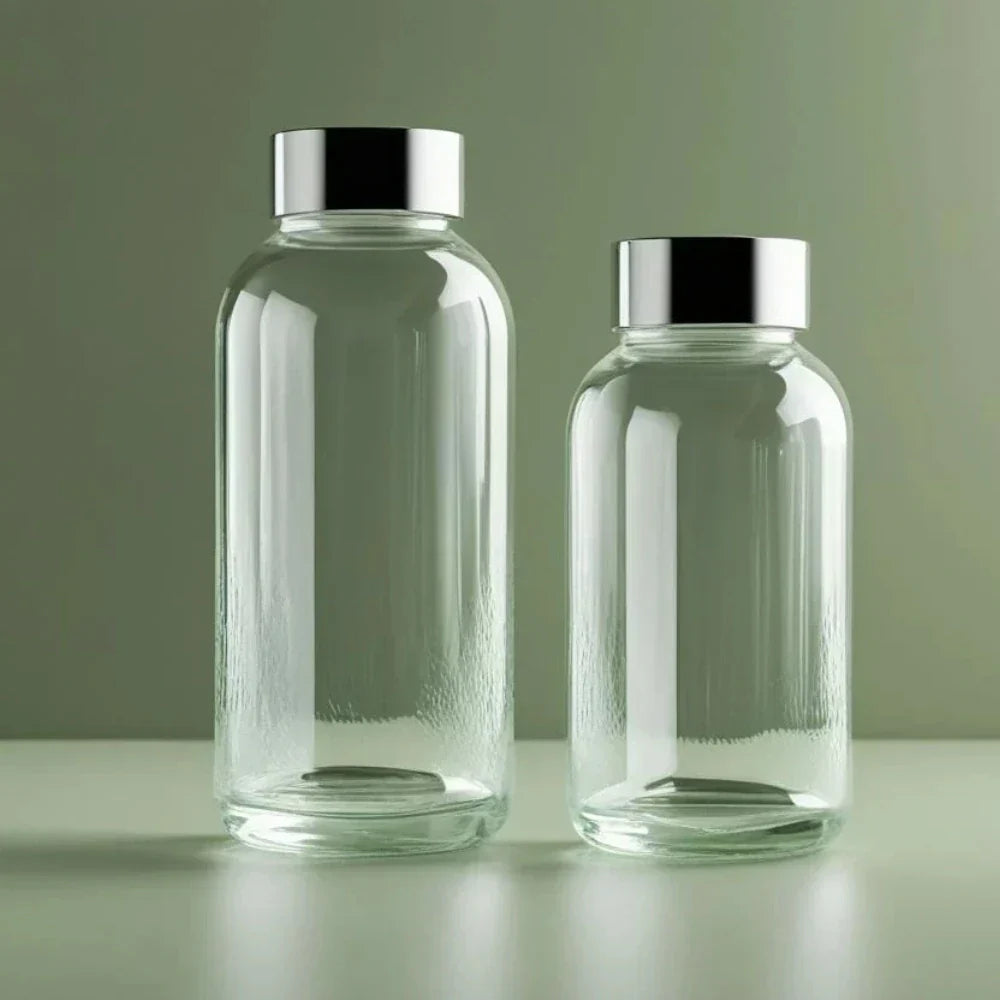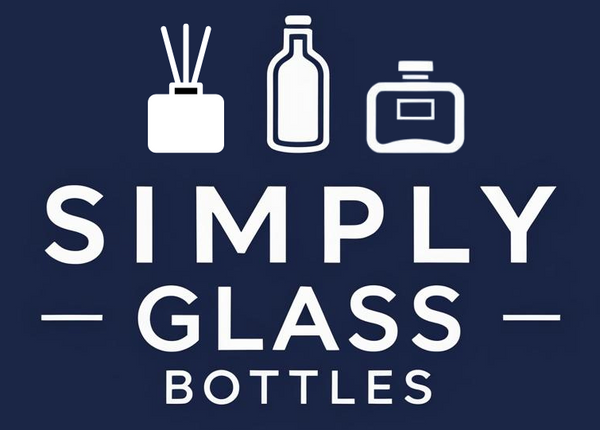
The Science Behind Glass Packaging
Share
The Science Behind Glass Packaging: How It has Made and Why It is Strong
Glass has been a cornerstone of packaging for centuries. Whether it is the elegant bottle that holds your favourite wine or the jar that preserves your grandmother’s homemade jam, glass packaging is a symbol of quality, purity, and durability. But what exactly makes glass such a strong and reliable material for packaging? How is it made, and what science lies behind its ability to withstand pressure, temperature changes, and time? This blog will delve into the fascinating science behind glass packaging, exploring its manufacturing process, the properties that give it strength, and why it remains one of the most trusted materials for packaging across industries.
What is Glass?
Glass is a non-crystalline, amorphous solid material that is made primarily of silica (SiO₂), the same compound found in sand. Unlike crystalline materials, glass does not have a structured, repeating atomic pattern, which gives it its unique properties. It is this structure, or lack thereof—that gives glass its transparency, brittleness, and, perhaps most importantly, its strength.
Glass is commonly made by heating a mixture of silica, soda (sodium carbonate), and lime (calcium oxide) to high temperatures until it melts and forms a molten liquid. This liquid is then shaped and cooled to form various products, including containers, windows, and even fiber optic cables.
The Glassmaking Process: From Raw Materials to Finished Product
The process of making glass packaging begins with the combination of raw materials. The three main ingredients are:
- Silica Sand (SiO₂): The primary component, which makes up about 70-75% of the mixture. Silica provides glass with its main strength and durability.
- Soda Ash (Na₂CO₃): This material lowers the melting point of silica, making it easier to form glass. Soda ash accounts for about 12-15% of the mixture.
- Lime (CaO): Lime stabilizes the structure of glass and helps prevent it from breaking down. It makes up about 10-15% of the glass mix.
These materials are mixed together and heated in a furnace at temperatures exceeding 1700°C (3100°F). This intense heat causes the raw materials to melt and fuse into a homogeneous liquid that can be moulded into different shapes. The molten glass is then formed into various containers, bottles, and jars using several techniques:
- Blowing: In the traditional method of glassblowing, air is blown into a molten mass of glass to create hollow objects. This technique is commonly used for producing glass bottles and jars.
- Pressing: A mould is used to press molten glass into a particular shape. This method is often used for producing containers with a consistent shape.
- Drawing: For making flat glass products, the molten glass is drawn through rollers or pulled into sheets. This method is used for creating windowpanes and flat glass containers.
- Casting: In this process, molten glass is poured into moulds to create more intricate designs, often for decorative glass products.

After forming, the glass is gradually cooled in a controlled environment, a process known as annealing. This step is crucial for ensuring that the glass does not crack or break due to internal stress. During annealing, the temperature is slowly reduced to room temperature to allow the molecules in the glass to arrange themselves into a stable configuration.
Why is Glass Packaging So Strong?
There are several reasons why glass packaging is strong and durable, making it an excellent material for holding beverages, cosmetics, pharmaceuticals, and food products. Let us explore some of the key properties that contribute to its strength:
1. Molecular Structure and Strength
As mentioned, glass is an amorphous material, meaning its molecules are not arranged in a regular, repeating pattern like those of crystalline substances. While this lack of order gives glass its characteristic transparency, it also contributes to its strength. The irregular arrangement of atoms in glass means that there are fewer places for cracks or weaknesses to form compared to crystalline materials, which often have “grain boundaries” where fractures are more likely to occur.
This amorphous structure is also responsible for the unique ability of glass to distribute stress. When pressure is applied to glass, it does not buckle under force as quickly as more brittle materials like ceramics, due to its consistent atomic bonding throughout the material.
2. High Compressive Strength
Glass has an incredible resistance to compression, making it ideal for holding liquid products under pressure. For example, a wine bottle can withstand the weight of other items in a shipment, while a soda bottle can resist the pressure from carbonated liquid inside. Glass can handle compressive forces because the atomic structure does not allow it to collapse easily under load.
While glass may not have the same tensile strength (resistance to stretching) as metals, its compressive strength is unmatched. The robust nature of glass allows it to hold liquids without warping, cracking, or degrading the contents inside.
3. Thermal Resistance
Glass also has excellent resistance to temperature changes, which is why it is often used in environments that require high-temperature endurance. The reason behind glass’s resistance to thermal stress is the low coefficient of thermal expansion—essentially, glass does not expand or contract as much as other materials when heated or cooled.
For packaging, this means that glass bottles can withstand the extreme temperatures of pasteurization or hot filling processes without shattering. It can go from cold to hot environments or vice versa with minimal risk of damage, which is essential for preserving products like beverages, sauces, and medicines.

4. Durability and Scratch Resistance
Glass is more scratch-resistant than many other packaging materials like plastic. This is especially important for products where the aesthetic appeal of the packaging is essential, such as cosmetics, perfumes, or premium beverages. The smooth surface of glass is harder and more resistant to wear and tear, ensuring that the product inside remains protected while maintaining the appearance of the packaging.
Additionally, glass does not degrade or leach chemicals over time, as some plastic materials do. This lack of degradation ensures that the contents inside glass packaging remain untouched by environmental factors, preserving their flavour, aroma, and quality.
5. Recyclability and Reusability
One of the major benefits of glass is its infinite recyclability. Unlike other materials like plastic, glass can be recycled indefinitely without losing its strength or quality. The process of recycling glass is energy-efficient, and it helps conserve raw materials, making glass packaging more sustainable. For businesses, this closed-loop system helps reduce costs in the long term and promotes environmental responsibility.
Recycling glass also minimizes the environmental impact of waste. With increasing consumer demand for eco-friendly products, glass is an attractive packaging material because of its sustainability.
Why Glass Packaging is Ideal for Consumer Goods
The scientific properties of glass—its strength, durability, thermal resistance, and sustainability—make it the ideal choice for packaging a wide range of products. Let us look at some industries that benefit from glass packaging:
Food and Beverages
Glass is one of the best materials for packaging food and beverages, particularly those that require long shelf life or temperature stability. It preserves the taste, texture, and quality of the product while providing a sturdy, attractive container. Glass packaging is non-reactive, meaning that it does not impart any chemicals into the food or drink, which is critical for products like juice, sauces, and dairy.

Cosmetics and Pharmaceuticals
Glass provides an air-tight seal, which is essential for preserving the integrity of high-value cosmetic and pharmaceutical products. The ability to protect sensitive formulations from light, moisture, and air means that ingredients remain stable, potent, and safe for longer. Additionally, the premium feel of glass enhances the overall perception of the product.
Luxury Goods
Glass packaging often conveys a sense of premium quality. For luxury goods like perfumes, fine wines, or spirits, the strength and clarity of glass are part of the appeal. Custom shapes, colours, and designs enhance the product's value, and consumers are often willing to pay more for glass packaging due to its perceived quality and elegance.

Conclusion: The Unbeatable Strength of Glass
The science behind glass packaging is a testament to its unmatched durability, sustainability, and aesthetic appeal. From its molecular structure to its ability to withstand temperature fluctuations, glass is an incredibly durable material that excels at protecting and preserving products. Its recyclable nature ensures that it remains a sustainable choice for manufacturers and consumers alike, making it an essential material in the modern packaging world.
By understanding the science of glass, we can appreciate not only its functionality but also its history, craftsmanship, and role in shaping the packaging industry. Whether you are holding a bottle of wine, a jar of jam, or a bottle of lotion, the strength of glass packaging is something to be admired, and now, you know exactly why.
